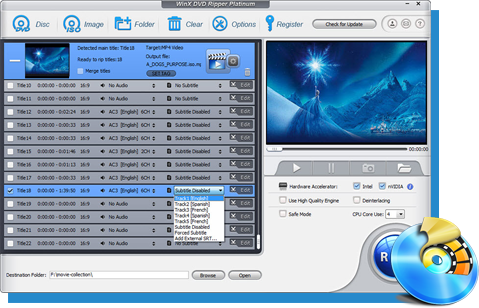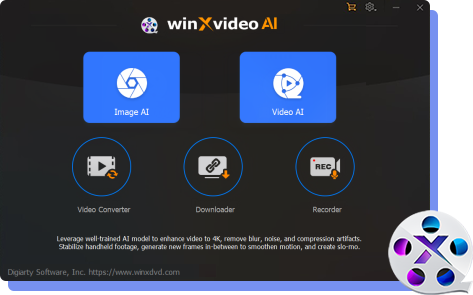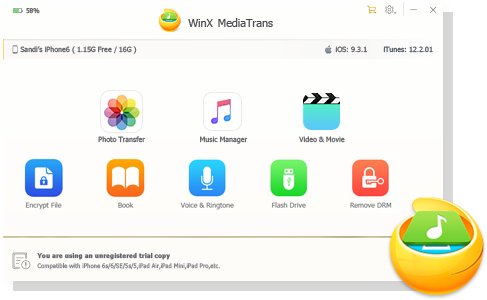MPEG2 vs MPEG4: Comparison Between MPEG2 and MPEG4
MPEG2 vs MPEG4? What are the differences? Which one is better? The age-old battle between MPEG2 and MPEG4, the two giants of video codecs, has continued to perplex many, even in the era of cutting-edge video technology. These codecs, while considered somewhat outdated, still hold significance in the world of digital media.
Unraveling the complexities of this MPEG2 vs MPEG4 showdown is essential for anyone navigating the vast landscape of video compression. Read MPEG2 vs MPEG4 comparison and learn the differences between MPEG2 and MPEG4 in terms of definition, file extension, compression ability, file size, quality, bit rate, bandwidth, and more.
Table of Contents
Part 1. MPEG2 vs MPEG4: Summary
When it comes to the MPEG2 vs MPEG4 debate, several crucial distinctions define their respective strengths and applications.
- MPEG2 gives better video quality but at the cost of larger file size compared to MPEG4.
- MPEG4 shows higher compression ratio, which is better when it comes to conserve storage space and data transmission.
- MPEG2 requires much more bandwidth for online streaming while MPEG2 faciliates smoother streaming experience.
- MPEG-4 is a far more versatile encoding format overall compared to MPEG-2.
- MPEG2 is the encoding method for DVDs, while MPEG4 is tailored for portable devices and online use.
- For its higher compression, smaller size and extensive applications, so ripping DVD to MPEG4 would be a good choice.
- MPEG2 and MPEG4 are popular formats used in different domains. Which one is more suitable for you is depend on your specific demands. For example, it is good to convert DVD to MPEG4 in order to play discs on various devices.
Part 2. MPEG2 vs MP4: Definition
MPEG is short for the Moving Pictures Experts Group who is responsible for the video encoding standards that we often use. Both MPEG2 and MPEG4 codec are widely used audio/video compression standards in many multimedia applications, ranging from mobile devices to DVD players.
What is MPEG2?
MPEG-2 coding format which was developed in 1995 was commonly applied to digital television broadcast, DVD, VCD and similar discs. It uses lossy compression techniques for audio and video files, to substantially reduce file sizes.
What is MPEG4?
MPEG-4 which was created in 1998 was mainly developed with the aim of achieving higher compression, lower bandwidth while providing superior audio and image quality compared to the earlier MPEG-2 format. In brief, its goal is to gain better picture and audio quality with smaller file size. It was specifically developed for mobile devices and online streaming or transmission. Most modern video codecs are based on MPEG4 like DivX and Xvid.
Part 3. Differences between MPEG2 and MPEG4
MPEG2 vs MPEG4 – Filename Extensions
MPEG2: .mpg, .mpeg, .m2v, .mp2, mp3 are some of a number of filename extensions used MPEG-2 audio and video file formats.
MPEG4: .mp4, .m4a, .m4b, .m4r, .m4v are some file extensions of MPEG4 video/audio.
MPEG2 vs MPEG4 – Compression
Video and audio compression aim to maintain audio or video quality while reducing the number of bits required. In this regard, MPEG4 outperforms MPEG2 due to its more advanced compression algorithm. MPEG2 employs lossy video compression and lossy audio data compression methods, whereas MPEG4 files can be lossless, though commonly, they are lossy to achieve smaller file sizes.
MPEG2 vs MPEG4 - File Size
MPEG4 encodes video files in significantly smaller sizes, enabling full-length movies to occupy less than 1 GB of space, while MPEG2 results in files approximately five times larger. MPEG2 is suitable for DVD storage, given its compatibility with capacities greater than 4 GB, but is less practical for portable devices. In contrast, the smaller size of MPEG4 facilitates online video purchasing and downloading. This difference also signifies a higher compression ratio for MPEG4, albeit at the expense of file size, while MPEG2 offers superior video quality at the cost of larger files.
MPEG2 vs MPEG4 – Quality
MPEG2 produces flawless quality compared to MPEG4 but it is not made for multimedia applications or online streaming. As mentioned above, MPEG2 can deliver better video audio quality but larger fize size is a payoff. The large size of MPEG2 makes the format impractical for network streaming. While MPEG4 provides better performance when being streamed online.
MPEG2 vs MPEG4 – Bit Rate & Bandwidth
MPEG4 is aimed at low bit-rate video transmission. Files encoded in MPEG4 format have a much lower bit rate ranging from a few kilobytes per second to megabytes per second while MPEG2 is tens megabytes per second. MPEG2 requires much more bandwidth when streaming recorded or real-time videos online compared to MPEG4 because of its large size.
MPEG2 vs MPEG4 – Application
MPEG2 is the encoding method used for television broadcast and DVDs. MPEG-2 is also a video coding formats supported by Blu-ray Disc. But new Blu-ray discs prefer H.264 instead of MPEG2. Blu-ray only supports MPEG-2 video (MPEG-2 part 2), MPEG-2 audio (parts 3 and 7) is not compatible. while MPEG4 coding standard is primarily applied to portable devices, Internet streaming, CD distribution, and broadcast television applications because of its smaller file size compared to MPEG2.
Related: MPEG-4 vs MP4: Definition, Compatibility, Differences
Related External Source for MPEG2 and MPEG4:
MPEG-2: MPEG-2 (H.222/H.262 defined by the ITU) is a standard for "the generic coding of moving pictures and associated audio information. MPEG-2 Wiki introduces MPEG2 main characteristics, history, filename extensions, applications, patent pool and more.
MPEG-4: MPEG-4 is a video coding method of defining compression of audio and video. Uses of MPEG-4 include compression of video and audio for streaming and CD distribution, portable devices and broadcast television applications. Learn more about MPEG4 format background, overview, licensing, MPEG-4 Parts and Level from Wiki MPEG-4.





















